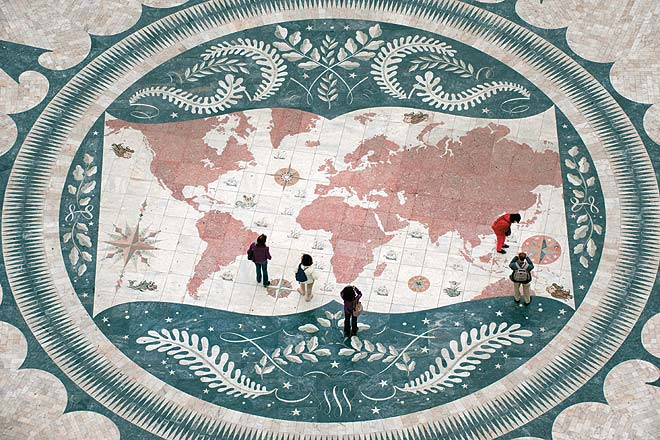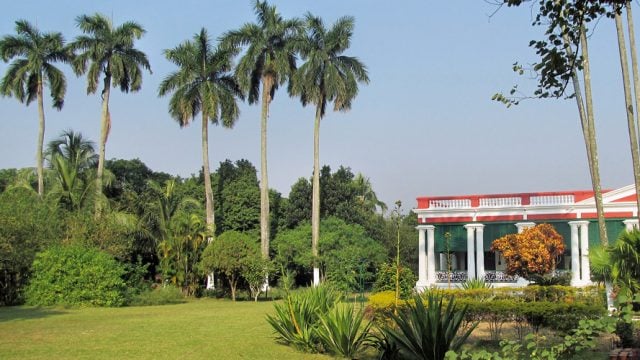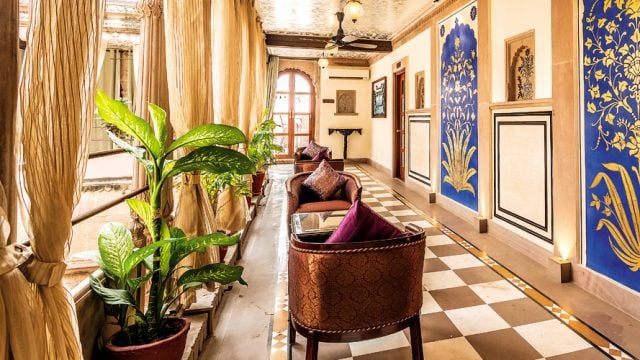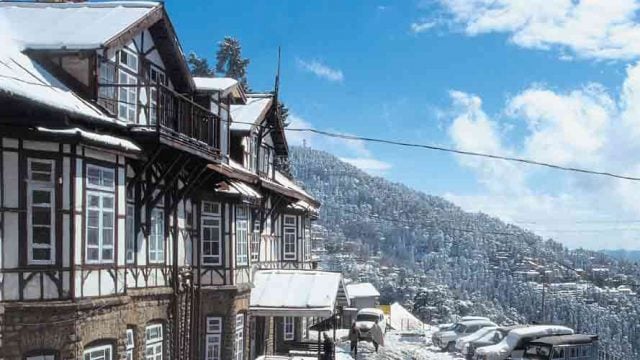I ate some stunning meals in my two weeks in Portugal. But regardless of how engrossing the
That was only the beginning. Some keen googling would lead me to discover that any number of common words as well as comestibles came to India from here. These are tempting to list, but before the impatient reader is compelled to judge this article using one such loanword—faltu—let us move on. There’s a pleasant, way-back sort of familiarity that today’s Indian might feel in Portugal. At the same time, the country is practically unknown in touristic terms. Think of any other country in western Europe and there comes to mind something—a cuisine or a monument or a landscape or aspects of culture. You’ll probably have no trouble guessing the European countries associated with these images: a leaning tower propped up solely by the efforts of tourists; snowy mountains with two men smoking very long pipes in the foreground; a brightly smiling blonde shepherding a flock of frothing beers; people in orange t-shirts bicycling past tulips. Now, what such picture would evoke Portugal for you? Quite likely—none.
And that would not be because Portugal has any lack of monuments, culture, picturesque views or epicurean delights. As I’d discover, it teems with all of those. In addition, it’s less expensive than most other countries in western Europe and feels refreshingly unselfconscious. And given our historical connections, Portugal should be a natural draw for Indian tourists. It is with precisely this in mind that a group of hospitality-and-tourism related entities are showing a group of Indian writers around the country.

Our first evening here, we go to Alfama, the oldest part of Lisbon, to a Fado festival. The traffic is in chaos, with several roads being closed and given over to runners. We decide to walk the last section down through steep, narrow streets and the little squares, bars and outdoor cafés of Alfama. This should be a wonderfully pleasant walk under normal circumstances. On this day, we find ourselves loose in the middle of whatever running event is happening.
We regularly encounter small bands of huffing people rushing up like fireflies with lights on headbands. These are clearly hardened runners who will not swerve or make any allowance on the one day the city has ceded space to them. To add to the crunch, there are clumps of people standing at corners or by the street to cheer them. Life becomes tight on these narrow streets. So we keep having to dart about like clumsy commandos—rushing off to the other side and pressing our backs to the walls, furiously waving each other out of the way of danger and ducking into narrower alleys only to find another horde stomping down upon us.
We reach late, but not too late to catch Carminho, a powerful singer who’s become a Fado sensation in recent years. Fado is a music form that has traditionally consisted of songs of loss and longing. After a few rapid beers to celebrate getting here in one piece, I’ve attained a kind of minor-scale sentimentality that happens to go perfectly with the singing. I may not understand the language, but I get you, Carminho. Which of us has not known loss? And life is beset with obstacles and people trying to run you down. Sometimes literally.
Fado is also considered the musical expression of what is Portugal’s national stereotype. If Germans are thought of as punctual and precise, if Italians gesticulate helplessly, and if the British are stoic, the Portuguese have something more abstract—saudade. It’s a word that’s frequently said to have no English equivalent, and means something like a wistful longing, an acknowledgement of what was present while lamenting its absence. This tendency is said to have been honed during the age of discovery, when sailors and soldiers travelled far from home, sometimes never to return. And later manifested as a longing for the fading glory of Portugal on the world stage, to be recalled again when its citizens migrated extensively in the 20th century.
Generalisations about entire nations can be taken only so seriously. There are Fado singers who experiment with more playful forms and those hordes of runners certainly didn’t look like they were pining for anything.
Down south in the Algarve, the Atlantic beckons. I’m happy enough to gaze from the balcony of our plush resort, but others in the past have been far braver. The era of Portuguese exploration and sea trade began in the early 15th century, credited largely to the prince known as Henry the Navigator. At Sagres fort is a monument to his school of navigation, where he is supposed to have gathered map-makers and navigators. Turns out that there was no such gathering, but he did start something that would lead to Portuguese sailors landing on the shores of Kerala a few decades later. Decidedly mixed consequences thereafter, but at least the Alphonso mango is unquestionably a good thing.
Some very fine wines produced in the Douro valley are consumed during this trip. I must admit I cannot tell the difference beyond a point, but I have it on good authority since some of the people I’m with are wine mavens, and there is much swirling and slurping followed by the deployment of angled adjectives: “Melon. Candy. 13.5 percent? Jasmine anybody?” My occasional interjections “Is anyone getting grape?”—do not mark me out as a talent. But the broad idea seems to be that Portuguese wines are frequently made from a mix of grape varieties and therefore have a complex yet rewarding character that’s not always easy to tease out. So, if you are a taster’s taster, this might be the place to go. And even I can tell that the port—named after Porto, where it was shipped from—is far, far nicer than what is sold in Bangalore’s liquor shops as ‘fort wine’ (a malapropism that is apt in all sorts of ways: port is fortified and the leading brand seems to be Golconda).

At Belém in Lisbon is an exhaustive maritime museum, where I’m strangely captivated by pepper kernels excavated from the wreckage of a ship that sailed from Cochin in 1606. The area is home to three significant monuments. One is the Belém Tower. Another is the Jerónimos Monastery, a grand five-hundred-year-old Gothic structure. The monastery was built from the proceeds of maritime discoveries, and the architectural motifs are nautical and marine—astrolabes, seashells, anchors, sail ropes. Vasco da Gama departed for India from Belém and died in Cochin on his third trip there. He’s now interred in the monastery, right back where he began.
The question remains: if, as looks likely, tourism to Portugal takes off in a big way, what icon would the country be identified with? My bet is it’s the third of those monuments at Belém: the Monument to the Discoveries, an enormous structure in the shape of a ship launching off into the waters of the Tagus River with a starcast of explorers at the prow. It’s where our man Vasco da Gama sailed to India from, and what could better complete the circle than Indian tourists posing merrily for photographs in front of it?
The information
Getting there: I flew Turkish Airlines from Delhi to Lisbon, via Istanbul. Economy return fares (in May) are approximately 45,000. A Schengen visa is required and can be applied for in India through VFS centres (http://pt.vfsglobal.co.in/).
Where to stay: In Sintra, an area of palaces, forts and forests, I stayed at the Penha Longa Ritz Carlton (from €180 doubles; www.penhalonga.com), a lush golf retreat built around a fourteenth-century monastery. In Porto, the country’s second largest city, I stayed at the Palacio Congress Hotel & Spa (from €89 doubles; www.hotelportopalacio.com). In the southern region of Algarve, I stayed at the family friendly Martinhal Beach Resort and Hotel (from €200 doubles; www.martinhal.com). And in the centre of the capital Lisbon, at the Four Seasons Hotel Ritz (from €370 doubles; www.fourseasons.com/lisbon).

What to see & do: Around Sintra, visit Cabo de Roca, the western tip of continental Europe with excellent views.There’s also the old Moorish castle and the fairytale Pena palace. Fatima is a pilgrimage destination for Catholics, the accumulated veneration of millions almost palpable in the air. The Douro valley is perfect for a vineyard visit accompanied by a well-lubricated meal (for instance at the Casal Branco estate; www.casalbranco.com). Porto’s city centre is dense with significant architecture including the St.Francis Church, the São Bento train station and the stock market palace. The rest of the city is particularly amenable to being inspected from a cruise on the Douro. You can try Feel Douro (www.feeldouro.com). In Lisbon, the steep, narrow streets of the old Alfama area make for a charming walk. See if there’s some Fadoto be heard at one of the cafés.The Belém area offers an entry to the Portuguese age of discovery with the tower, the Monument to the Discoveries, the Jerónimos Monastery and the Museu da Marinha (maritime museum). Everywhere in Portugal, one can’t help noticing intricate ceramic work—tiled on floors, used for the entire façade of buildings, even the immigration countertop at Lisbon airport. For some perspective, visit the National Tile Museum (www.museudoazulejo.pt). My trip was organised by Mr Travel Portugal, which specialises in making personalised luxury travel arrangements (www.mrtravelportugal.com).
Where to eat: At the seaside getaway of Cascais near Sintra, queue up for ice-cream at Santini, said to be the ‘best ice-cream in the world’. In Sintra, the Penha Longa Arola restaurant serves a meal composed of assorted tapas and wines with a Portuguese twist (from €42 per person). The voracious will take a fancy to the book-themed Restaurante Bookin Porto (www.restaurantebook.pt). Chef Rui Paula’s restaurant DOC in Armamar in the wine-producing Douro valley is built on a pier with a wonderful view. Local wines are paired with inventive renderings of traditional dishes. The afternoon long lunch we had here was truly one of the highlights of the trip (€60 per person without drinks; www.ruipaula.com). Chef José Avillez’s Minibar in Lisbon has a bravura tasting menu that serves sequences of edible baubles where nothing is what it seems (€48.5 per person; www.minibar.pt). On the streets, do try the bifana, a simple, flavourful pork sandwich. And once you’ve got past the obligatory and ubiquitous custard pastry that goes by the name pastel de Belém, the pastry shops are full of further delights.
holiday
Lisbon
Portugal
Leave a Reply
You must be logged in to post a comment.





